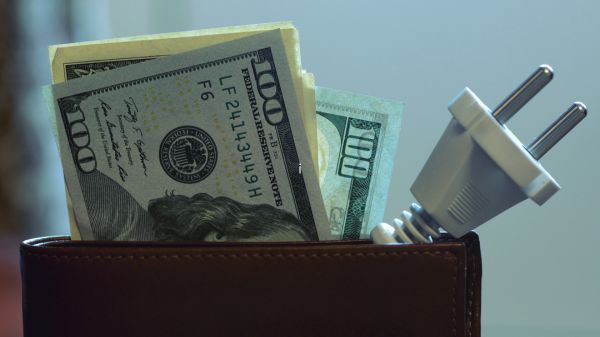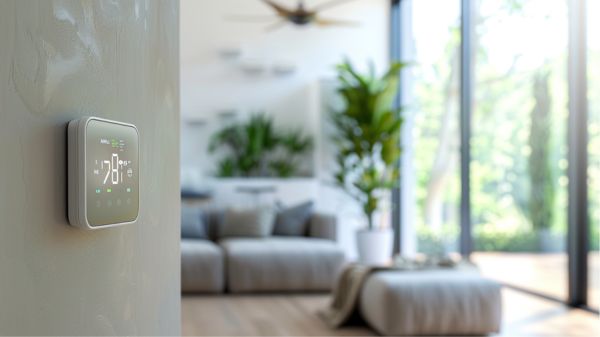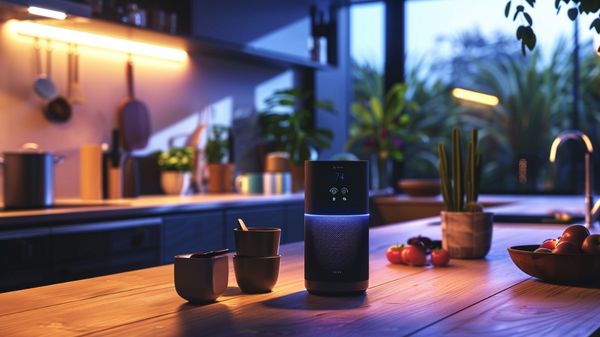As households look for ways to reduce overheads amidst rising utility costs, understanding how to effectively manage and lower your electric bill becomes essential. The initial step, conducting a home energy audit, can reveal surprising areas of energy waste that, once addressed, lead to substantial savings.
Subsequent adjustments, such as optimizing thermostat settings or upgrading to energy-efficient appliances, are straightforward yet impactful measures. Exploring these options not only assists in decreasing monthly payments but also promotes a more sustainable lifestyle. What remains to be discussed are the finer details of each tip, which could provide even more significant reductions in your electric bill.
Key Takeaways
- Install programmable or smart thermostats to automatically adjust temperatures, saving up to 15% on heating and cooling costs.
- Upgrade to ENERGY STAR-certified appliances to reduce energy consumption and benefit from potential rebates.
- Use LED lighting, which consumes 75% less energy than incandescent bulbs and significantly lowers electricity bills.
- Implement smart power strips to cut off power to standby devices, potentially saving up to $100 annually.
Conduct an Energy Audit
Have you considered how conducting a home energy audit could reveal cost-effective ways to reduce your electric bill? An energy audit assesses your home’s energy efficiency, pinpointing areas where energy leaks and inefficient practices increase your energy consumption. By identifying these vulnerabilities, such as inadequate insulation or air leaks through windows and doors, homeowners can address issues that could otherwise lead to as much as 30% of heating costs.
Many utility providers offer these audits at free or discounted rates, providing a professional evaluation that includes tailored recommendations for enhancing your home’s energy savings. These recommendations often cover quick fixes and long-term solutions, which can drastically reduce energy waste. Additionally, employing energy monitors during the audit can help you understand your real-time energy consumption and identify peak usage times.
For those preferring a more hands-on approach, DIY energy audits are also an option. Online tools and checklists are available to guide homeowners through the process, helping them to independently assess areas of improvement.
Implementing the changes recommended in an energy audit not only supports energy conservation but also results in substantial cost savings, making it a prudent step for any homeowner looking to minimize their energy expenses.
Optimize Thermostat Settings
Adjusting your thermostat settings is a straightforward strategy for reducing your electric bill. By setting your thermostat to the best temperatures for different times of the year, you can achieve significant savings without sacrificing comfort. Additionally, programmable thermostats can automate these adjustments, ensuring maximum energy use throughout the seasons.
Ideal Temperature Settings
Adjusting your thermostat settings by 7-10 degrees lower in winter and higher in summer can save you approximately 10% on heating and cooling costs annually. Smartly managing your thermostat is a straightforward strategy to lower your bills and reduce energy consumption.
Here are some ideal temperature settings that can help you maximize savings without sacrificing comfort:
- Daytime Setting: While at home during the day, set your thermostat to 68°F in winter and 78°F in summer. This level maintains comfort and efficiency.
- Nighttime or Away Setting: Lower your thermostat setting to 58°F in winter or raise it to 88°F in summer when you are asleep or away from home. This reduces energy use considerably.
- Adjust Gradually: To avoid discomfort, adjust the temperature gradually by 1-2 degrees each day until you reach the desired setting.
- Seasonal Adjustments: As seasons change, revisit your temperature settings to verify they’re fine-tuned for current weather conditions, thereby maintaining efficient annual heating and cooling.
Programmable Thermostat Benefits
Building on the idea of ideal temperature settings, programmable thermostats offer an effective way to further reduce heating and cooling costs by automating temperature adjustments based on your daily schedule. By leveraging these devices, homeowners can optimize their energy usage without compromising comfort, leading to significant reductions in energy costs.
Programmable thermostats allow for setting different temperatures for various times of the day—warmer when the house is occupied and cooler during work hours or at night when everyone is asleep.
This targeted approach guarantees that heating and cooling systems are not operating unnecessarily, which can save money and reduce your electricity usage. With potential savings of 10-15% on these costs, investing in a smart thermostat is both a practical and eco-friendly decision.
Moreover, modern smart thermostats go a step further by learning from your habits and making automatic adjustments. This not only enhances user convenience but also maximizes efficiency, often leading to annual savings that can quickly offset the initial purchase price, typically ranging from $130 to $200.
Additionally, making sure that your thermostat is properly placed away from drafts and direct sunlight can further enhance its accuracy and energy-saving potential, solidifying its role as a key tool in energy management and cost reduction.
Seasonal Adjustments Guide
Making seasonal adjustments to your thermostat settings is a straightforward strategy to enhance energy efficiency and reduce utility expenses throughout the year. By fine-tuning the thermostat based on seasonal needs, you can effectively manage your household’s energy consumption and notably lower your bills.
Here’s how you can maximize your thermostat settings seasonally:
- Winter Savings: Set your thermostat 7-10 degrees lower when you’re asleep or away from home. This adjustment can save you around 10% on heating bills annually. Utilize programmable thermostats to automate these changes without sacrificing comfort.
- Summer Strategy: Increase the thermostat setting by 7-10 degrees during the hours you’re out. Coupled with closing curtains or blinds to block out heat, this helps reduce air conditioning usage and can cut cooling costs by up to 10%.
- Night Adjustments: Consider lowering the temperature by 10-15 degrees overnight during winter months. This not only promotes better sleep due to cooler temperatures but also maximizes energy savings.
- Maintenance Matters: Regularly change your air filters and check on HVAC efficiency. Proper maintenance prevents overuse of energy and helps maintain an ideal temperature with less effort from your appliances.
Implementing these strategies guarantees your thermostat works effectively, helping you save energy and reduce costs all year round.
Improve Water Heating Efficiency
Reducing your water heater’s temperature from 140°F to 120°F can decrease energy costs by 4%-22%, reflecting considerable savings given that water heating constitutes approximately 18% of home energy use. This simple adjustment not only reduces energy consumption but also prolongs the life of your water heater by minimizing mineral buildup and corrosion.
To further reduce energy costs and enhance efficiency, consider insulating your water heater and the pipes connected to it. Insulation helps retain heat within the system, decreasing the amount of electricity needed to maintain hot water temperatures. This can lead to noticeable reductions in monthly energy bills.
Additionally, installing low-flow fixtures in showers and faucets can greatly cut down hot water usage, which in turn reduces the demand on your water heater. These energy-efficient fixtures can save approximately 2,700 gallons of water per year, further lowering your utility expenses.
Regular maintenance is essential to keep your water heating system running efficiently. Annual flushing of the tank to remove sediment buildup can prevent inefficiencies and potential failures, ensuring peak performance.
Lastly, upgrading to a modern, energy-efficient water heater, such as a heat pump model, can offer substantial savings over time compared to traditional models. This investment not only cuts energy costs but also supports environmental sustainability.
Utilize Smart Power Strips
Continuing with energy-saving strategies, utilizing smart power strips is an effective way to minimize phantom energy loss and reduce electric bills. These innovative devices offer a practical solution to cut down on energy waste and ultimately lower your electricity bill by addressing the energy consumed by devices left in standby mode.
Here are some notable benefits and functions of smart power strips:
- Automatic Shutdown: Smart power strips detect when devices are in standby mode and cut off power, preventing phantom energy loss which can save up to $100 annually.
- Scheduled Timers: Incorporate timers and remote controls to manage when devices receive power, further helping to reduce unnecessary consumption.
- Consolidation: By consolidating multiple devices into one smart power strip, you can enhance energy efficiency and reduce the clutter of having multiple chargers.
- Environmentally Friendly: Using smart power strips helps in creating an environmentally friendly home by reducing your overall electricity consumption.
Investing in smart power strips not only supports energy efficiency but also promotes a more sustainable lifestyle. As smart power becomes more integral in homes, these strips are a cost-effective measure to guarantee you’re only using energy when absolutely necessary.
Invest in Energy-Efficient Appliances
Why not upgrade to energy-efficient appliances that not only reduce energy consumption but also offer significant savings on your electric bill? Investing in appliances that are Energy Star certified is a practical and cost-effective strategy. These appliances are designed to save more energy, which directly translates to reduced electricity bills and utility costs.
By opting for energy-efficient models, you can enjoy the dual benefits of conserving resources while lowering your monthly expenses. For instance, modern energy-efficient refrigerators can save you approximately $200 a year compared to older models. Similarly, energy-efficient dishwashers that use less energy and water can save around $40 annually. These savings add up, providing substantial financial benefits over the lifespan of the appliances.
Moreover, these appliances often have longer lifespans, reducing replacement costs and further enhancing their cost-effectiveness. Many states also offer rebates or tax incentives for purchasing Energy Star products, making the initial investment even more attractive.
| Appliance Type | Annual Savings Estimate |
|---|---|
| Energy-Efficient Fridge | $200 |
| Energy-Efficient Dishwasher | $40 |
| Average Savings | $240 |
Investing in energy-efficient appliances is a smart move for anyone looking to cut down on expenses and contribute to environmental sustainability.
Upgrade to LED Lighting
Upgrading to LED lighting is a straightforward and effective strategy for reducing your electric bill.
By switching to LED bulbs, which use about 75% less energy than traditional incandescent bulbs, homeowners can achieve significant savings—approximately $225 annually.
Additionally, the long lifespan of LED bulbs, up to 25,000 hours, minimizes the frequency and cost of replacements compared to their incandescent counterparts.
Benefits of LED Bulbs
Switching to LED bulbs can dramatically reduce your home’s electricity consumption, saving up to 75% on lighting costs compared to traditional incandescent bulbs. This shift not only addresses high electricity bills but also enhances the energy efficiency of your lighting solutions.
Embracing LED technology offers multiple advantages, essential for anyone looking to reduce their energy use and environmental impact. Here are four compelling reasons to contemplate making the switch to LED bulbs:
- Notable Cost Savings: On average, households save about $225 annually on their electricity bills by replacing incandescent bulbs with LED bulbs. This reduction is due to the lower energy requirements of LEDs.
- Extended Lifespan: LED bulbs have a lifespan of approximately 25,000 hours — nearly 25 times longer than traditional bulbs. This longevity markedly decreases the frequency of replacements, further reducing your long-term expenses.
- Reduced Carbon Footprint: By using LEDs, an average household can lower carbon dioxide emissions by about 683 pounds per year, promoting a healthier and more sustainable environment.
- ENERGY STAR-Certified Options: Many LED bulbs are ENERGY STAR-certified, ensuring they meet stringent guidelines for energy efficiency set by the EPA, which guarantees performance and reliability.
Incorporating LED lighting into your home is a practical, cost-effective strategy that yields substantial benefits over time.
Comparing Lighting Costs
When considering the financial benefits of LED lighting, it is evident that the significant energy efficiency and extended lifespan of LED bulbs can lead to substantial savings over time. By switching from incandescent bulbs to LED bulbs, homeowners can save approximately $225 over the lifetime of the bulbs. This is primarily because LED bulbs consume up to 75% less energy than traditional incandescent bulbs, which can drastically reduce electricity bills.
LED bulbs boast an impressive average lifespan of 25,000 hours compared to the 1,000 hours typical of incandescent bulbs. This stark difference not only curtails the replacement frequency but also minimizes the ongoing expenses associated with lighting costs. Additionally, the advent of LEDs with dimming capabilities offers further energy savings, allowing users to adjust the brightness according to their needs and thereby optimize electricity usage.
The initial investment in LED lighting, though slightly higher, usually pays off within a year or two, thanks to the significant reductions in electricity bills and fewer bulb replacements.
Embrace Water Conservation
Conserving water is an effective strategy to not only decrease your monthly electric bill but also benefit the environment.
Engaging in water conservation can directly lead to lower energy bills, especially when considering the energy required to heat water. Utilizing simple, data-driven methods can notably reduce your utility bills and save energy, all while helping to reduce water waste.
Here are several practical steps to embrace water conservation:
- Shorten Your Showers: By reducing shower time by just two minutes, you can save approximately 5 gallons of water each time. This reduction in water use also decreases the energy needed for heating water.
- Install Low-Flow Showerheads: These fixtures use no more than 2 gallons per minute, saving about 2,700 gallons of water per household annually, which also means less energy used for heating that water.
- Opt for Warm or Cold Water Washing: Using warm or cold water for washing clothes instead of hot can help save on heating costs and also prolong the life of your garments.
- Use Water-Efficient Appliances: Invest in Energy Star-rated appliances like dishwashers, which can save approximately 5,000 gallons of water per year, translating into notable savings on your utility bills.
Frequently Asked Questions
What Runs Your Electric Bill up the Most?
The primary factors elevating your electric bill include inefficient appliance usage, heating systems, excessive cooling costs, poor lighting choices, standby power consumption, inadequate water heating settings, and suboptimal home insulation affecting overall energy efficiency.
What Are the Extreme Ways to Lower Your Electric Bill?
Extreme measures to lower your electric bill include conducting energy audits, installing solar panels, upgrading to smart thermostats, utilizing off-peak usage, replacing inefficient appliances, enhancing insulation, and implementing significant behavioral changes for energy conservation.
What Strategies Can You Use to Reduce Your Electricity Bill?
To reduce your electricity bill, invest in energy-efficient appliances, upgrade insulation, and utilize LED lighting. Implement smart home technology, adjust thermostat settings, use power strips, and consider renewable energy sources during off-peak hours.
What Devices Lower Your Electric Bill?
Devices such as smart thermostats, energy-efficient appliances, LED lighting, and smart power strips reduce electric bills. Additionally, solar panels, programmable timers, energy audits, and insulation upgrades are effective in lowering energy consumption.
Conclusion
To sum up, implementing these strategies to lower electric bills is both practical and cost-effective.
By conducting energy audits, optimizing thermostat settings, improving water heating efficiency, using smart power strips, investing in energy-efficient appliances, upgrading to LED lighting, and embracing water conservation, households can achieve significant savings.
These measures not only reduce energy consumption but also contribute to environmental sustainability.
As a result, adopting these initiatives is beneficial from both an economic and ecological perspective.




